The Great Wall Beyond China: Uncovering Global Ancient Defence Systems
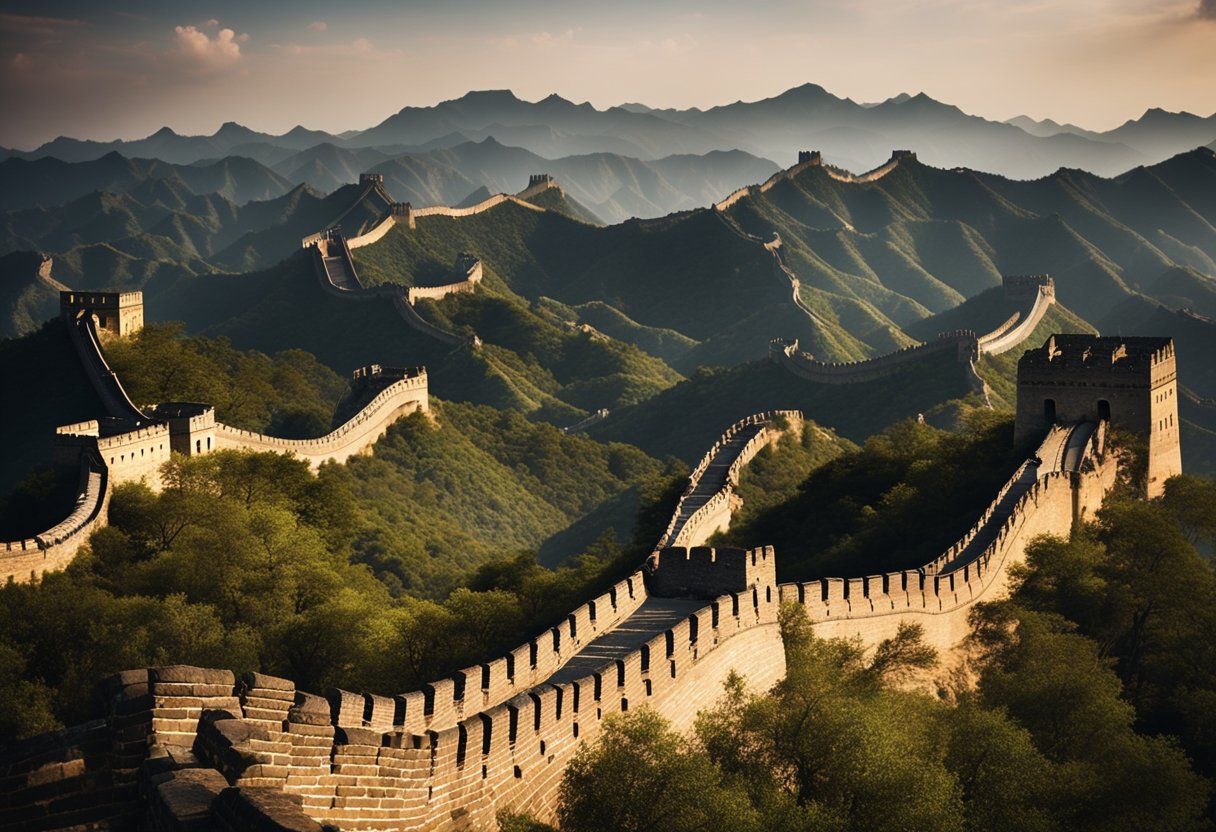
Updated On: April 07, 2024 by Marwa Alaa
The majestic Great Wall of China is often the first thing that comes to mind when thinking about ancient fortifications. Its winding path over rugged mountains and through vast deserts has made it a symbol of the enduring legacy of Chinese civilisation. But beyond the iconic Great Wall, there are other lesser-known ancient barriers around the world that also hold significant historical importance. Each has its own unique story, offering a window into the cultures and conflicts of eras long past.
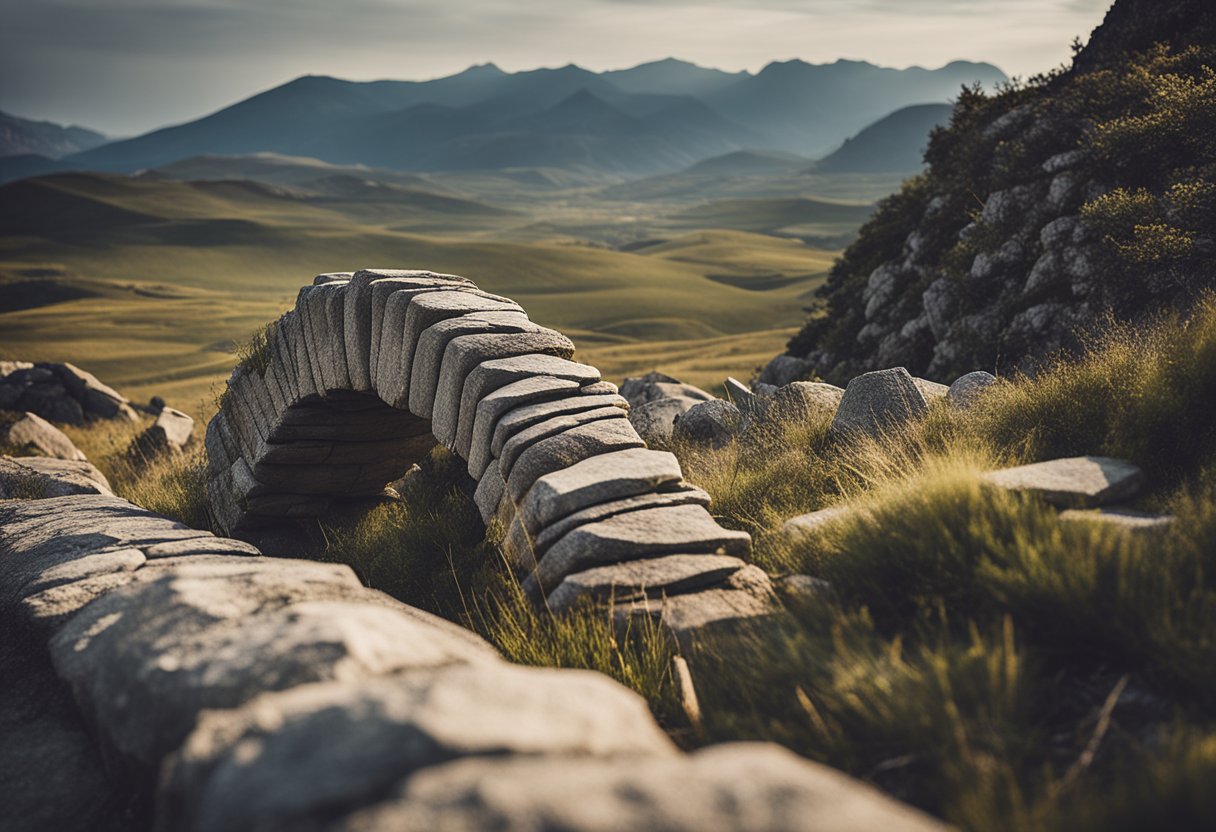
Ancient barriers were more than just walls; they were complex systems of defence, symbols of power, and markers of territorial boundaries. From the linear earthen ramparts in the British landscape to the extensive fortifications that crisscross the landscapes of continents like Africa and Europe, these structures reflect the architectural ingenuity and geopolitical currents of their times. They were built to protect and demarcate, but today they stand as silent witnesses to the shared human instinct to guard what is considered valuable—be it land, people, or culture.
Historical Context of Ancient Barriers
In this section, we’ll examine the origins of ancient barriers, including their construction techniques and regional influences. These structures epitomise the strategic and cultural importance they held through the ages.
Early Constructions and Purposes
Ancient civilisations constructed barriers such as walls and fortifications with the primary objective of protecting their territories from invaders. One prominent example is the Great Wall of China, which was built over a period of centuries using various materials, including rammed earth. During the Ming dynasty, the wall was significantly enhanced to defend the Chinese states against nomadic tribes from the north.
- Materials: Utilised locally sourced materials, predominantly stone, brick, and rammed earth.
- Strategic: Structured to control borders, manage trade, and assert sovereign influence.
Regional Significance
The significance of barriers like the Great Wall transcended their immediate defensive role, shaping the political and cultural landscape. Throughout various dynasties, these walls came to signify power, elicited economic growth, and influenced regional stability.
- Cultural Impact: Embodied the ingenuity and resilience of the civilisations and became symbols of national pride.
- Geopolitical Influence: Walls like the Great Wall of China delineated boundaries and were often instrumental in the development of a region’s geopolitical identity over the centuries.
Geographical Scope and Scale
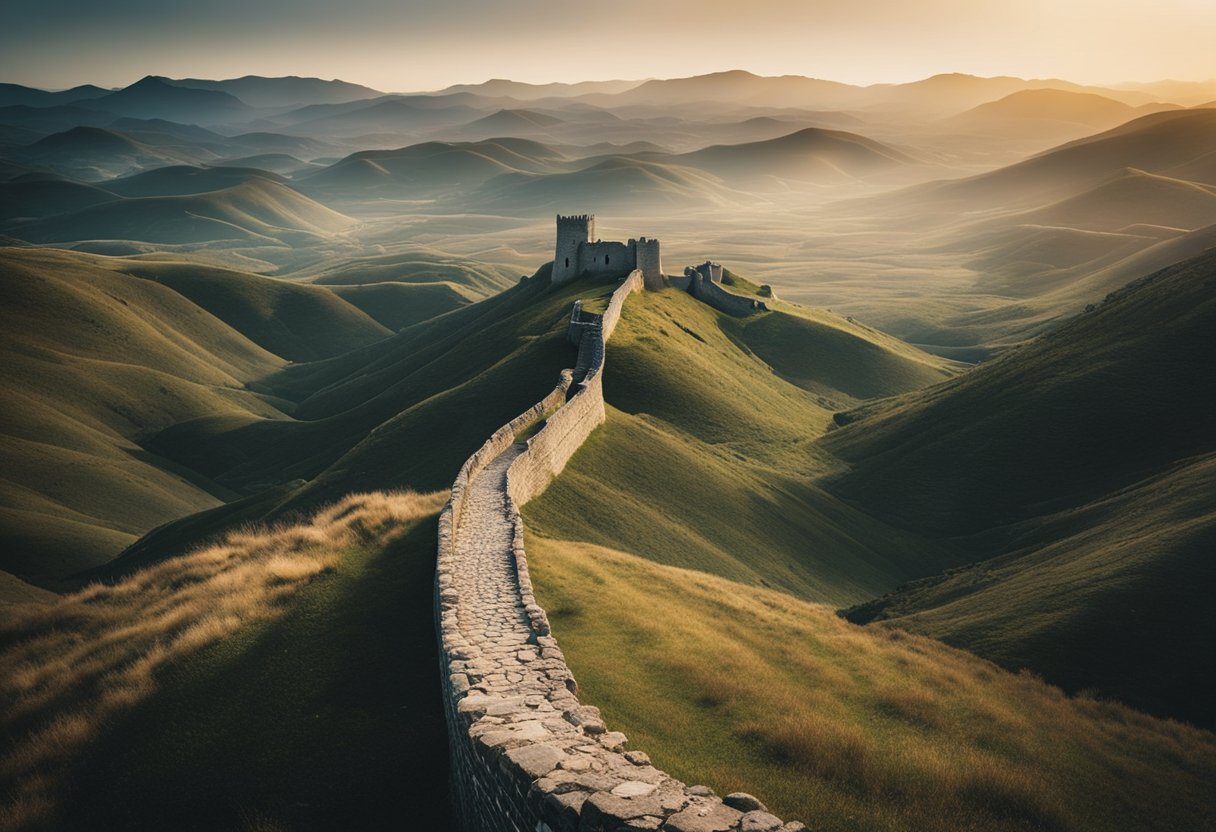
When discussing ancient barriers, recognising their geographical reach and the enormity of their construction is crucial. These structures are not only marks of historical significance but are also marvels of engineering that were often constructed under challenging conditions.
Beyond the Borders of China
Our exploration of ancient barriers begins with the Great Wall of China, a colossal fortification extending over 20,000 kilometres. This awe-inspiring barrier traverses diverse terrains from deserts to mountains, marking the historical northern borders of Chinese civilisation. However, the implications of such a vast structure go beyond the physical limits. It served not only as a defence against invasions but also as a means of controlling trade and migration, solidifying the notion of a defined Chinese territory.
Comparison with Other World Barriers
When we compare the Great Wall to other monumental barriers around the world, it is evident that its scale is unparalleled. For instance:
- Hadrian’s Wall: Spanning approximately 117 kilometres across Northern England, built by the Romans.
- The Limes Germanicus: A series of fortifications stretching over 500 kilometres intended to border the Roman Empire from Germanic tribes.
| Ancient Barrier | Length | Purpose |
|---|---|---|
| Great Wall of China | 20,000+ km | Defence, trade control, territorial demarcation |
| Hadrian’s Wall | ~117 km | Military fortification |
| The Limes Germanicus | ~500 km | Border defence of the Roman Empire |
While the Great Wall of China stands out for its size, the strategic purposes of these walls align closely with one another – they were all constructed to protect and define the boundaries of vast empires, showcasing the human aspiration to establish control and safeguard their realms.
Architectural Features and Techniques

Identifying the architectural elements and construction methods of ancient barriers gives us insight into the ingenuity of past civilisations. We see these methods reflected in structures such as the Great Wall of China.
Rammed Earth Construction
Rammed earth, a traditional technique used predominantly in the construction of the Great Wall of China, involves compacting earth, such as clay and soil, mixed with natural materials like gravel, straw, and lime, to form solid walls. Sections like those in Shandong province – estimated to be 2,500 years old – showcase this enduring method. This technique not only provided resilience but also utilised readily available resources, reflecting a sustainable approach to construction.
Military and Surveillance Infrastructure
Incorporating military functionality, the Great Wall was fortified with beacon towers and watchtowers. These structures were pivotal in surveying the surrounding lands and signaling the approach of enemies. Beacon towers were used to send smoke or fire signals during different periods of the day and night, allowing messages to be relayed quickly across long distances. Watchtowers were strategically placed to provide shelter for troops and a high vantage point for surveillance, critical in ensuring the Great Wall’s effectiveness as a military barrier.
Cultural Impact and Symbolism
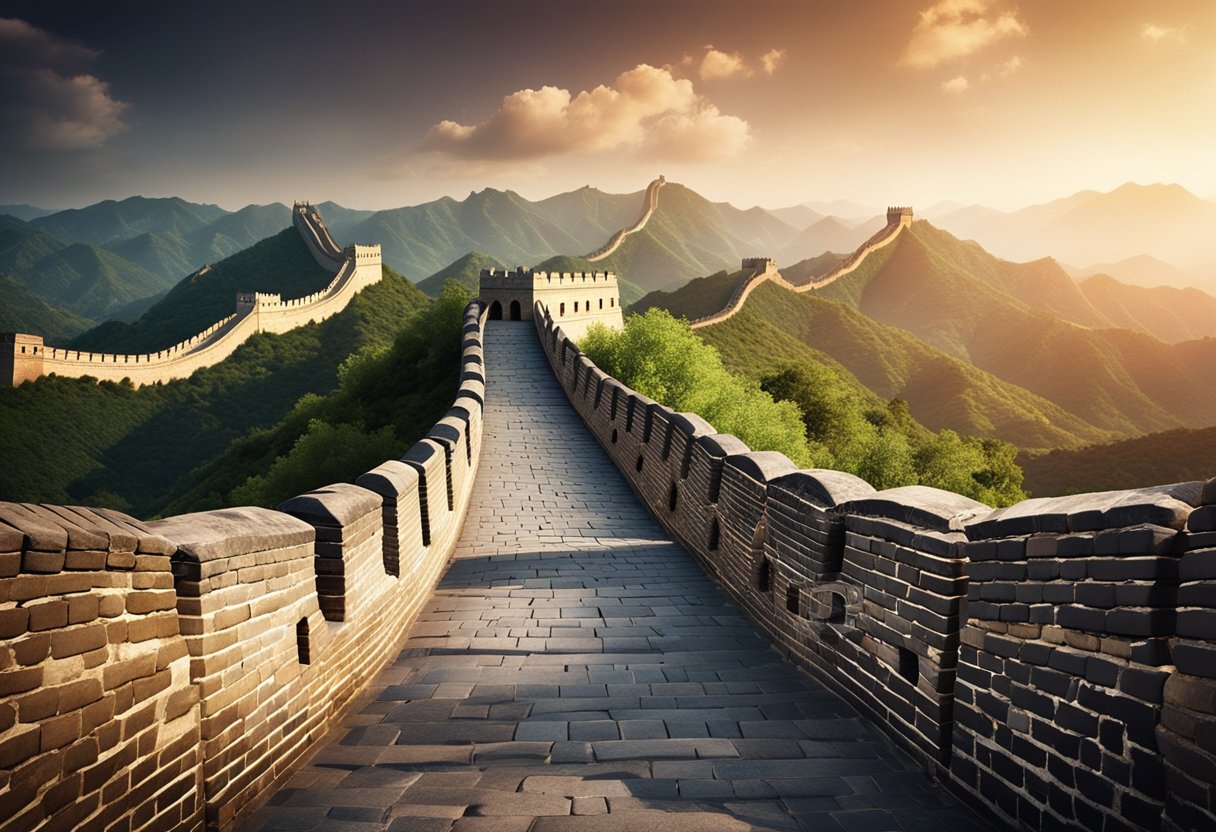
The Great Wall of China transcends its physical presence by embodying the cultural and historical spirit of the Chinese nation. We’ll explore how it serves as a potent emblem of national identity and its representation in various forms of media and literature.
The Wall as a National Symbol
The Great Wall has always stood as a symbol of Chinese strength and ingenuity. It represents not just a means of protection but also a marker of cultural identity — an enduring testament to the nation’s historical significance and a source of national pride. In China, the Wall is not merely an ancient construction; it’s a cultural and spiritual icon, reflecting the unity and the continuation of Chinese civilization through time.
Representation in Media and Literature
The image of the Great Wall has been ingratiated into global consciousness through its frequent representation in media and literature. Its depiction spans a vast array of forms, from poems glorifying its grandeur to films and documentaries examining its history and cultural importance. This veneration in the arts both perpetuates and echoes the pride the Chinese people feel towards this magnificent structure, further solidifying its role as a cultural cornerstone.
Conservation and Restoration Efforts
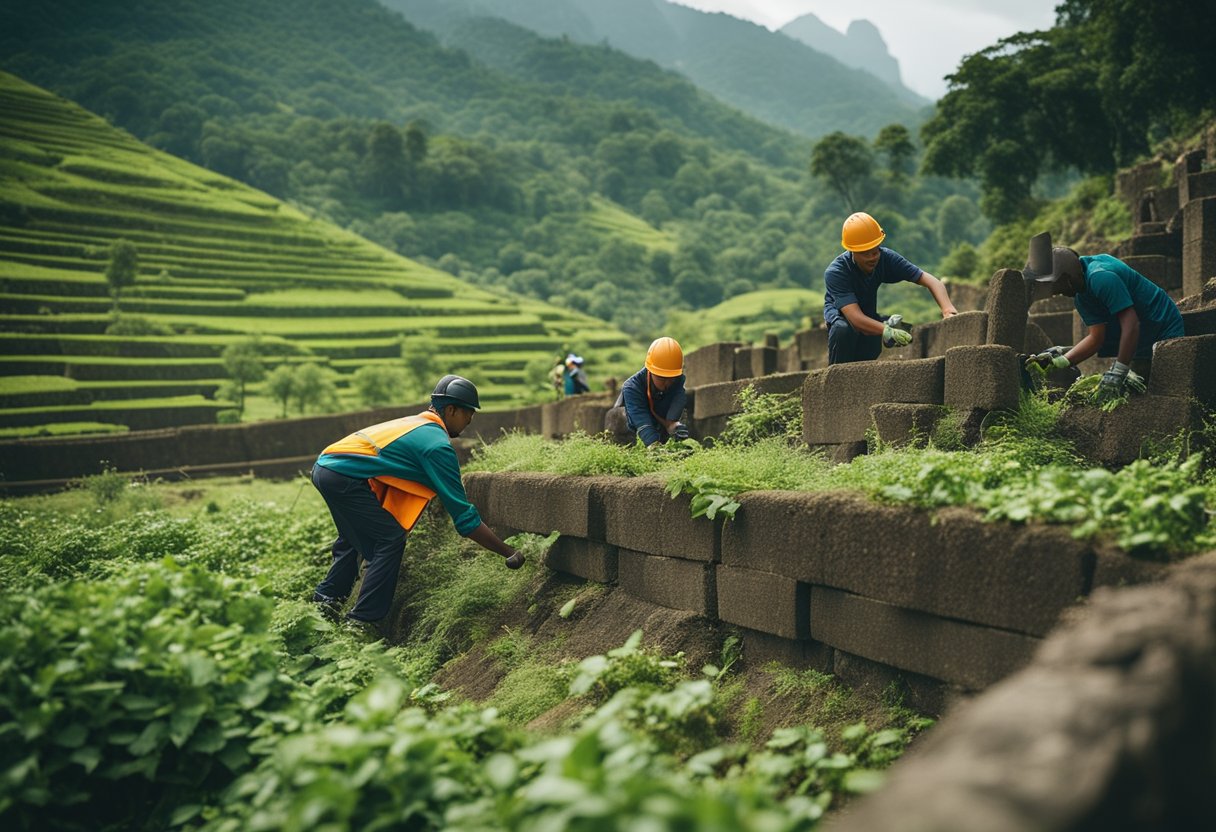
The preservation of ancient barriers, such as the Great Wall of China, is vital to maintaining the cultural heritage and historical integrity of such landmarks. Our focus here is on the meticulously planned efforts that ensure these ancient structures are both protected and sustained for future generations to witness.
UNESCO Designation and Protection
The Great Wall of China, spanning over 20,000 kilometres, has received UNESCO World Heritage designation for its historical and architectural significance. UNESCO’s involvement has been pivotal in ensuring international protocols for conservation are adhered to, thus safeguarding the wall’s integrity. Furthermore, research-oriented conservation initiatives have been launched at various sections of the wall, incorporating cutting-edge technologies such as 3D modelling in their restoration practices.
Modern Challenges
Despite UNESCO’s efforts, the Great Wall faces modern challenges that threaten its existence. Increasing tourism, along with natural erosion, demands a balance between modernization and conservation. Protection efforts are indeed a race against time, with restorative works being carefully executed to maintain authenticity while preventing further deterioration. With these challenges comes the responsibility to blend modern techniques with traditional restoration practices, ensuring the wall’s longevity as a symbol of historical triumph.
Tourism and Access
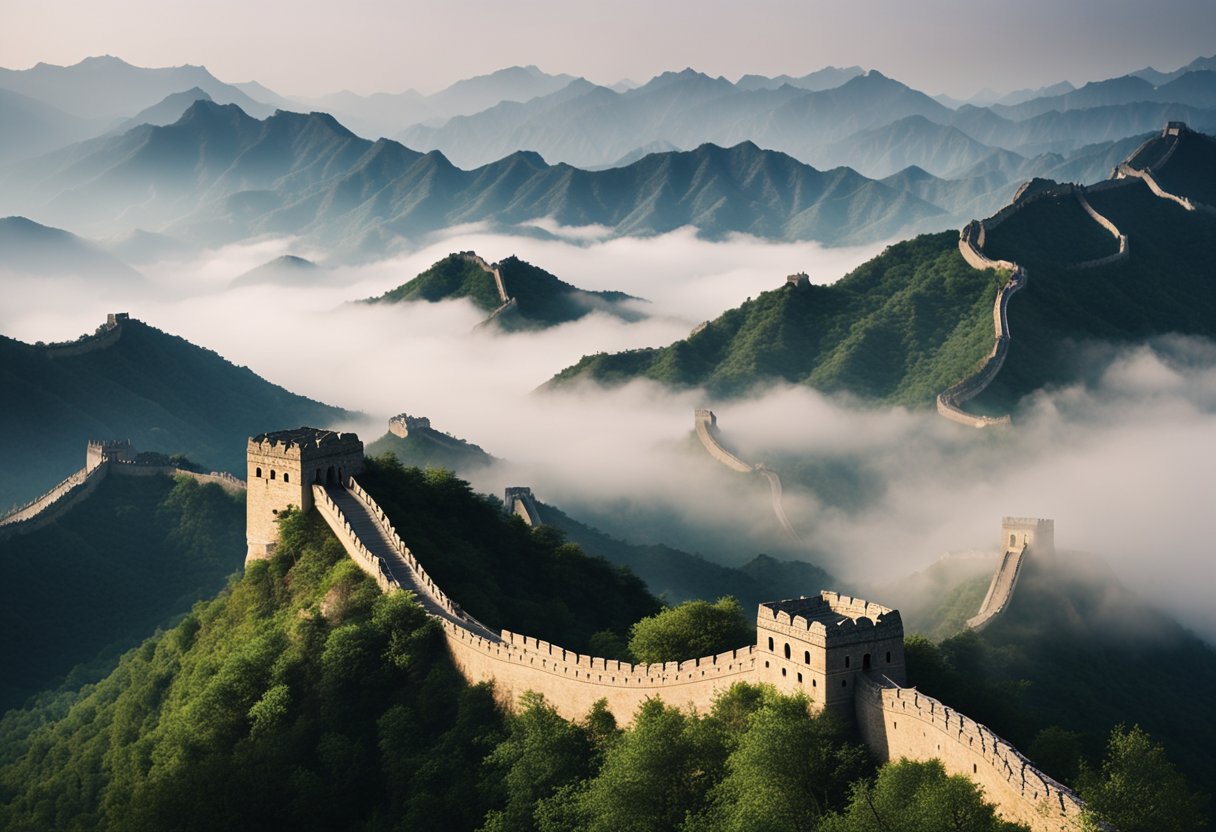
In exploring ancient barriers like the Great Wall, we prioritise both the ease of tourism and the sustenance of these historical sites through access initiatives.
Popular Segments for Visitors
The Great Wall boasts several sections that are highly frequented by visitors. Among these, Badaling is the most visited due to its proximity to Beijing and the ease with which tourists can access it. It offers stunning vistas and a glimpse into the magnificence of this ancient structure. Another notable segment more recently opened to tourists is Huanghuacheng, which presents a unique experience with its lakeside views and partially submerged walls.
Responsible Tourism Initiatives
We are witnessing a growing commitment towards responsible tourism along the Great Wall. Visitor management strategies, including capping visitor numbers and promoting off-peak travel times, aim to reduce the environmental impact on these areas. Regulations are being enforced to ensure that the integrity of the Wall is not compromised. Additionally, efforts to involve local communities through tourism can help generate income while fostering cultural exchange and understanding.
Influence on Contemporary Infrastructure
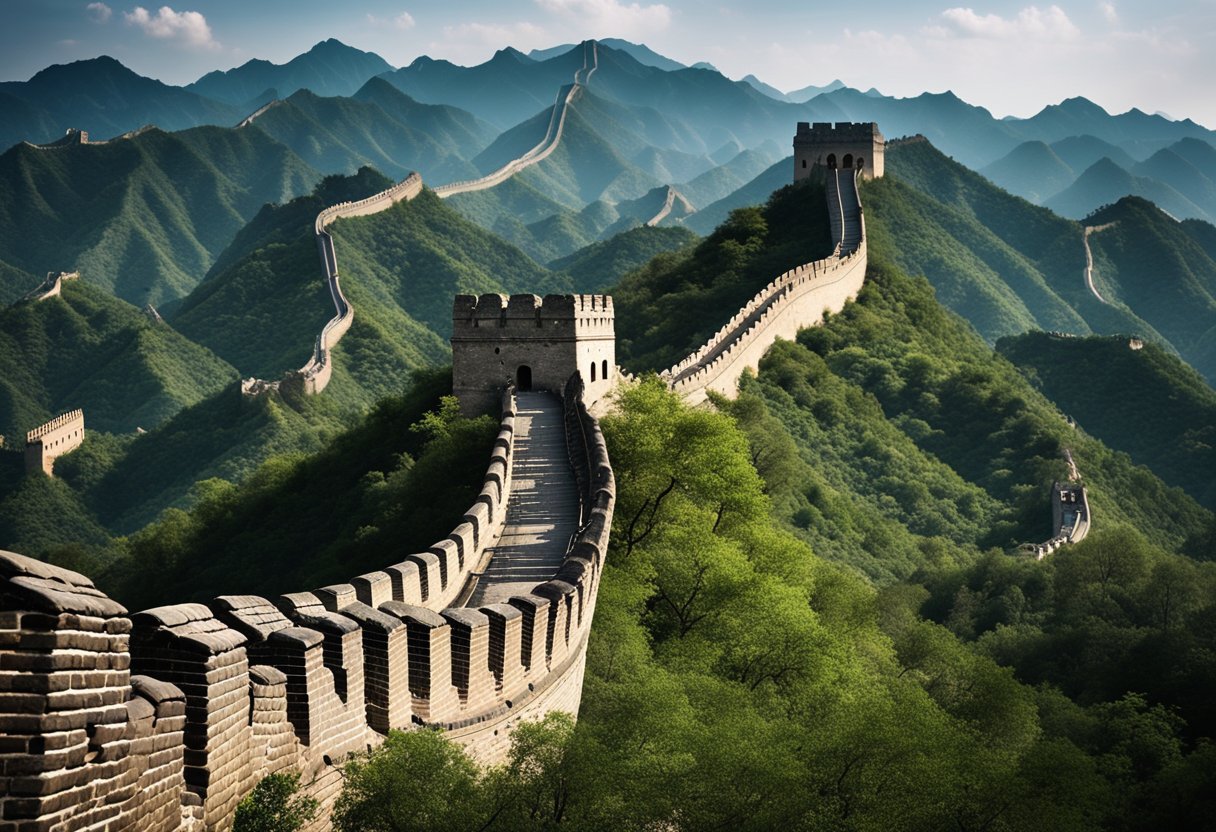
The ancient fortifications that have stood the test of time, like the Great Wall of China, inspire the urban landscape of our modern cities.
Urbanisation and the Integration with Modern Cities
As cities expand both vertically with skyscrapers and horizontally through urbanisation, we find that ancient structures such as the Great Wall no longer stand in isolation. In Beijing, the Great Wall has become an integral part of the cultural backdrop as the city modernises. The juxtaposition of ancient stone against the glass and steel of contemporary buildings creates a narrative of China’s long history interwoven with its march towards modernisation.
Moreover, cities like Shanghai, known for its futuristic skyline, continue to expand outward, integrating with historic sites. These urban centres exemplify a blend of old and new, with traditional architecture like the Great Wall informing design elements in modern infrastructural projects. The Wall’s architecture has influenced not only aesthetic choices but also the importance of integrating green spaces and preserving historical sites amidst rapid development.
The Great Wall and Natural Landscapes
Before diving into the intricate relationship the Great Wall has with its surrounding landscape, it is essential to appreciate how this ancient fortification not only stands as a testament to human ingenuity but also as a monument that complements and is complemented by the natural terrain of Northern China.
Interaction with Mountain Scenery
The Great Wall is a marvel, winding like a dragon through Northern China’s mountainous terrain. Its very structure relies on the contours of the landscape, utilising the rugged topography to enhance its defensive capabilities. In spots where the mountains provide a natural barrier, the Wall integrates with them, forming a seamless defensive boundary that is as much a part of the landscape as the peaks themselves.
Environmental Considerations
From an environmental perspective, the Great Wall presents unique challenges and considerations. Recognised by the World Monuments Watch as a site of historical significance, efforts are made to balance preservation with the natural decay often imposed by the elements. For instance, in areas where erosion and vegetation overgrowth present a risk, there is a delicate interplay between maintenance for tourist accessibility and allowing natural processes to occur, highlighting how the Wall exists both within and as a part of its environment.
Bridging the Past and Present
As we explore ancient fortifications, our understanding of their structure and significance offers vital insights into modern life and culture.
Lessons from Historical Engineering
Our study of the Great Wall’s construction showcases extraordinary feats of historical engineering. The ingenuity deployed to build this staggering defence underlines an era where functionality dictated design, particularly during the Ming Dynasty. The Wall, a marvel of military architecture, was constructed to withstand both the ravages of time and the assaults of invaders. The techniques employed tell of a profound understanding of landscape integration—an aspect still relevant in modern structural engineering.
Cultural Relevance in Modern Society
The Great Wall transcends its original military purpose, symbolising the enduring strength of a culture that shaped not just a nation but the world at large. Its historical significance endures in how we perceive cultural resilience and continuity. Modernization edges forward, yet we embrace the Wall as a vibrant emblem of our shared heritage. Drawing from this, we in modern society glean the importance of preserving such cultural landmarks, understanding their roles as connectors to our ancestry and educators for future generations.
Connections to Other Notable Destinations
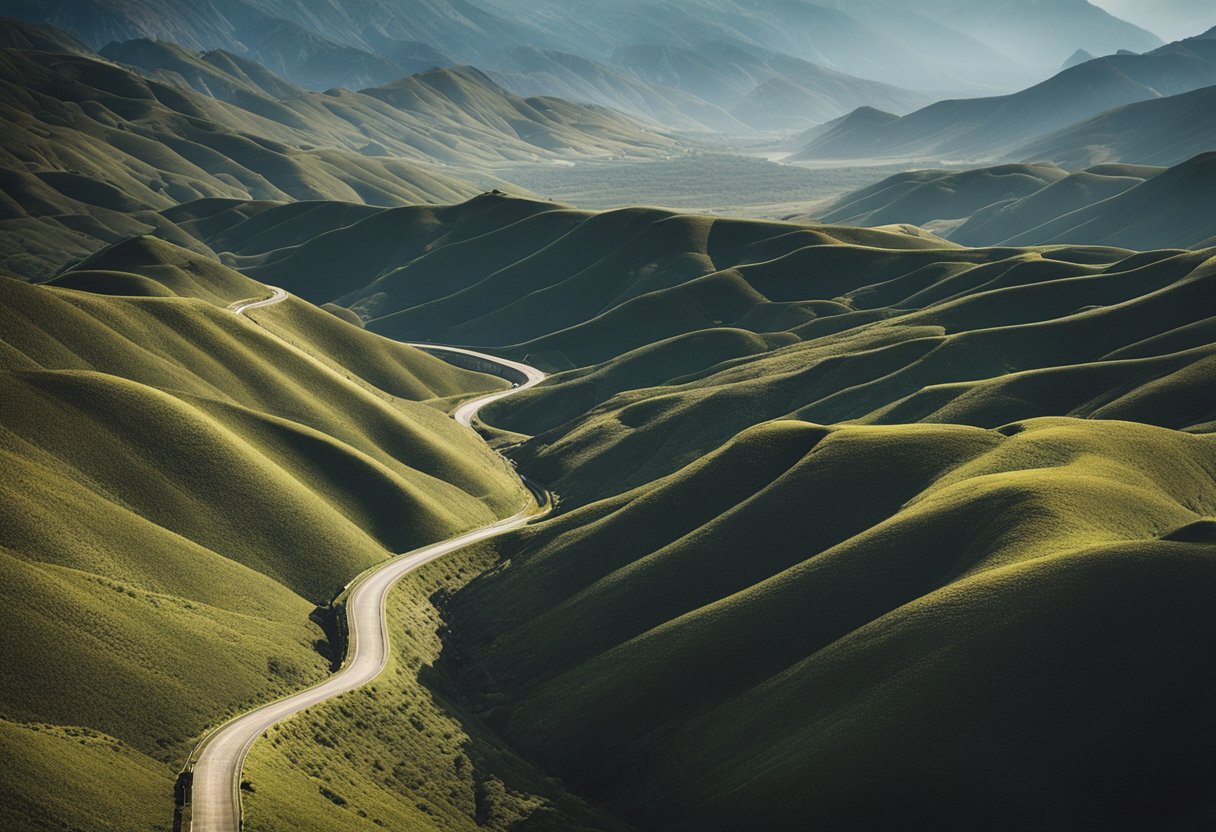
When exploring the Great Wall of China, we extend our journey to include other remarkable ancient barriers and sights. Beijing, merely a stepping stone, allows us to venture to destinations echoing history’s depth. Just as the Great Wall snakes across northern China, our travel interests meander towards the UK, where venerable structures like Hadrian’s Wall stretch near the border between England and Scotland, just as steeped in history as their Chinese counterpart.
| Destination | Ancient Barrier | Notable Nearby City |
|---|---|---|
| China | Great Wall | Beijing |
| UK | Hadrian’s Wall | Newcastle upon Tyne |
Our travels from Beijing may lead us to the grandeur of Shanghai’s skyline, a modern marvel contrasting greatly with our ancient themes, yet reflecting the continuity of mankind’s endeavour to reach for the skies. In our journey, we recognise the interwoven nature of the past and the present, the ancient and the bustling modernity of our world.
As we consider our connections, we remain attuned to the essence of travel, which is to weave threads of knowledge and cultural appreciation across continents. We embrace the chance to traverse not only China’s landscapes but the rolling hills of the UK, discovering barriers that once defined empires and protected civilisations.
These are but a glimpse into the tapestry of human history we seek to explore and understand in its full context, always mindful to approach with respect and a yearning for authentic experiences. Our travel narratives are enriched by these explorations, adding depth to our collective journeys and insights into our shared past.
The Great Wall in the News

In recent times, The Great Wall of China has featured prominently in the media landscape, drawing attention from news outlets, travel blogs, and tourists alike. The majestic barrier, known for its historical significance and architectural grandeur, continues to raise concerns about its preservation and the challenges of modernisation.
-
Preservation Efforts: Reports have highlighted efforts to protect the Great Wall, recognising the need for careful stewardship to maintain its integrity for future generations. These initiatives often reflect a balance between allowing tourist access and safeguarding the structure from potential damages.
-
Damage and Repairs: Instances of damage, including a recent case where a portion was harmed in pursuit of a shortcut, underscore the vulnerability of this ancient edifice. These news stories typically involve subsequent restoration projects, demonstrating China’s commitment to the monument’s longevity.
-
Tourism Trends: Media coverage frequently showcases the Great Wall as a top travel destination, emphasising its appeal to tourists from around the world. Articles often provide insights into the best times to visit and the most scenic sections to explore, aiming to assist travellers in planning memorable journeys.
-
Cultural Considerations: News stories sometimes delve into the cultural impacts of tourism, stressing the importance of respecting the Wall’s heritage. Discussions focus on sustainable travel practices, urging visitors to consider their footprint when exploring this iconic landmark.
Our collective lens on such developments reflects a broader fascination with heritage sites; we remain dedicated to monitoring and sharing news about the Great Wall. Through this, we foster a deeper understanding of both its historical significance and its contemporary challenges.
Frequently Asked Questions
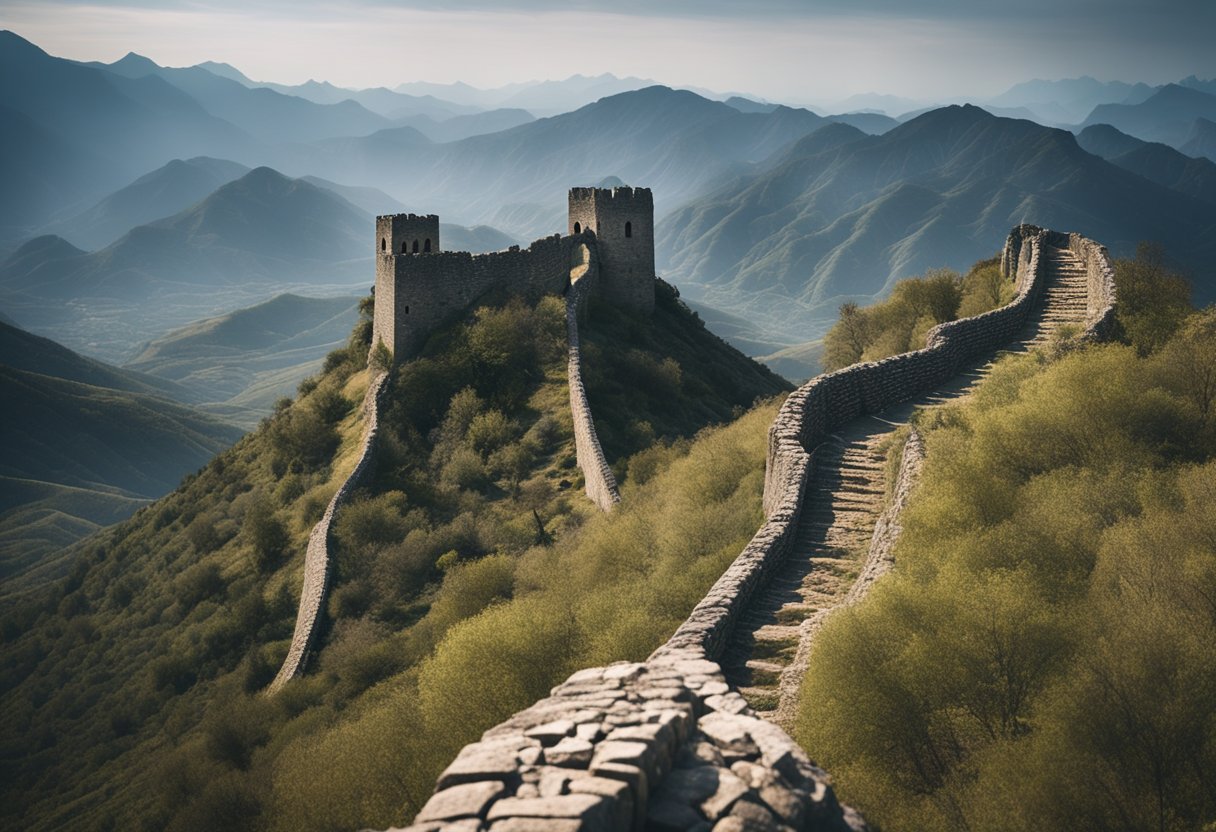
In this section, we address some of the most common enquiries regarding ancient fortifications around the globe, shedding light on their historic purposes, comparing them to the Great Wall of China, and discussing their preservation and impact.
What purposes did other ancient barriers around the world serve?
Ancient barriers were constructed for a variety of reasons, including defense against invasions, demarcation of borders, and control of trade routes. They also served as symbols of power and deterrence, much like the Great Wall of China.
Which ancient walls or barriers are considered parallel constructions to the Great Wall of China?
Parallel constructions to the Great Wall can be seen in the Roman Hadrian’s Wall in Northern England and the fortifications of the Sasanian Empire, like the Gorgan Wall in present-day Iran. Each structure exemplifies the extensive reach and protective measures of their respective empires.
What are the significant threats to the preservation of the Great Wall?
The Great Wall faces several threats, including natural erosion, human damage, and nearby construction. Efforts to preserve this monument are ongoing, though challenges due to its length and location persist.
What are some major differences between the Great Wall of China and other lesser-known barriers?
While other barriers, like the Anastasian Wall in Turkey, or the walls of Ston in Croatia, were significant in their times, the Great Wall’s massive scale, construction ingenuity, and longevity stand apart. The Great Wall’s unique structure of watchtowers and beacon towers also differs from many other ancient fortifications.
How has the preservation of ancient walls been managed in other countries?
Preservation efforts in other countries vary widely, from consistent restoration policies to reliance on local support. For instance, Hadrian’s Wall’s preservation is managed by a combination of UNESCO World Heritage status, national trusts, and dedicated local efforts.
What historical impacts have other ancient barriers had on their respective regions?
Ancient barriers have shaped the historical and cultural landscapes of their regions. For example, the Roman Limes represented the boundaries of the Roman Empire and influenced the layout of modern European borders. These structures have often become symbols of historical and cultural identity.






